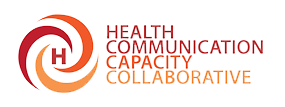Anyaegbunam, C., Mefalopulos, P., Moetsabi, T. (2004). Participatory Rural Communication Appraisal: Starting with the people. Rome: Food and Agriculture Organization of the United Nations.
Bertrand, J. T., & Kincaid, D. L. (1996). Evaluating information-education-communication (IEC) programs for family planning and reproductive health. Final report of the IEC working group.
Cleland, J., & Wilson, C. (1987). Demand theories of the fertility transition: An iconoclastic view. Population Studies, 41(1), 5-30.
Doran, G. T. (1981). There’s a SMART way to write management’s goals and objectives. Management review, 70(11), 35-36.
Edelman, D., & Salsberg, B. (2010). Beyond paid media: Marketing’s new vocabulary. McKinsey Quarterly, 1-8.
Fox, H. (1989). Nonformal Education Manual. Washington, DC: Peace Corps/Information Collection and Exchange, #M0042.
Glanz, K., & Bishop, D. B. (2010). The role of behavioral science theory in development and implementation of public health interventions. Annual review of public health, 31, 399-418.
Health Communication Capacity Collaborative (November 2013). The P Process. Five Steps to Strategic Communication. Baltimore: Johns Hopkins Bloomberg School of Public Health Center for Communication Programs.
Howard-Grabman, L., & Snetro, G. (2003). How to mobilize communities for health and social change.
Kincaid, D. L., & Do, M. P. (2003). Causal attribution and cost-effectiveness of a national communication campaign: Family planning promotion in the Philippines. Baltimore, MD: Center for Communication Programs, Johns Hopkins University.
Kincaid, D. L. (2004). From innovation to social norm: Bounded normative influence. Journal of Health Communication, 9(S1), 37-57.
Kincaid, D. L., & Do, M. P. (2006). Multivariate causal attribution and cost-effectiveness of a national mass media campaign in the Philippines. Journal of Health Communication, 11(S2), 69-90.
Maxfield, A. (2004). Information and communication technologies for the developing world.
McKee, N., Bertrand, J., Becker-Benton, A., & Becker, B. L. (2004). Strategic communication in the HIV/AIDS epidemic. Sage.
National Cancer Institute, Pink Book – Making Health Communication Programs Work.
Noar, S. M. (2006). A 10-year retrospective of research in health mass media campaigns: Where do we go from here?. Journal of health communication,11(1), 21-42.
Noelle-Neumann, E. (1995). Public Opinion and Rationality 1. Public opinion and the communication of consent, 33.
O'Sullivan, G. A., Yonkler, J. A., Morgan, W., & Merritt, A. P. (2003). A field guide to designing a health communication strategy. A resource for health communication professionals.
Salem, R. M., Bernstein, J., & Sullivan, T. M. (2008). Tools for behavior change communication.
Snyder, L. B. & LaCroix, J.M. (2012). How effective are mediated health campaigns. Public communication campaigns, 3, 181-90.
Storey, J.D., Kaggwa, E., Harbour, C. (2007). Pathways to Health competence for Sustainable Health Improvement: Examples from South Africa and Egypt.
Storey, D. (2012). Toward a global theory of health behavior and social change. The Handbook of Global Health Communication, 70-94.
UNICEF. Communication Emergency Response to Newly Emerging and Re-Emerging Diseases. Draft.
Zaman, F., & Underwood, C. (2003). The gender guide for health communication programs. CCP Publication, 102.

